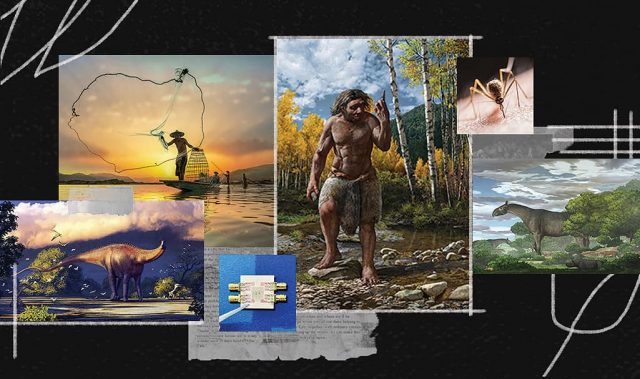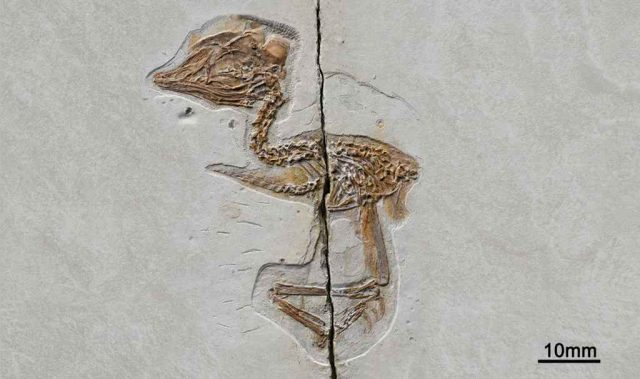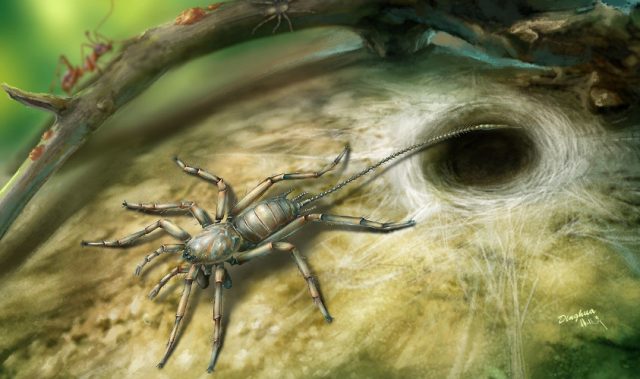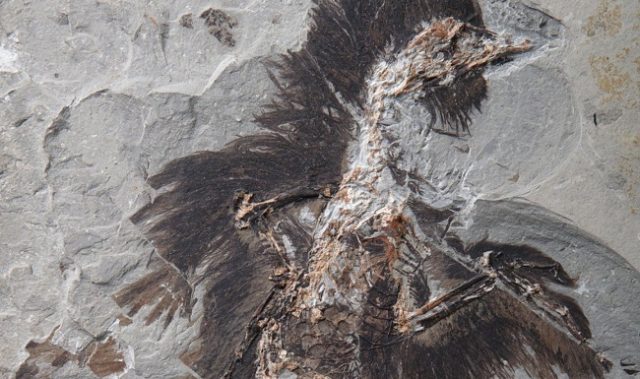
AsianScientist (Mar. 16, 2021) – In a discovery straight out of Jurassic Park, paleontologists from China have unearthed a remarkable fossilized find: a dinosaur sitting on a nest of ancient eggs—some with embryos still inside. The preserved scene was documented in Science Bulletin.
The fossil in question is that of an oviraptorosaur or oviraptorid, a group of dinosaurs named for their supposed egg-stealing habits. When first described in the early 20th century, the skeletal remains of oviraptorids were typically found next to egg nests—giving paleontologists the initial impression that the dinosaurs preyed on such nests.
Over the years, brooding specimens have been found, proving that the oviraptorids were in fact the rightful owners of the eggs. What makes the current fossil so extraordinary is that the eggs still contain evidence of embryos within.
Recovered in southern China’s Jiangxi province, the fossil dates back towards the end of the Cretaceous period, approximately 70 million years ago. It consists of an incomplete skeleton of a large, adult oviraptorid crouched in a brooding posture over an undisturbed clutch of 24 eggs. At least seven of these eggs contain the partial skeletons of unhatched embryos inside.
Given these embryos’ late stage of development and the close proximity of the oviraptorid to the eggs, the team surmised that the dinosaur likely died in the act of incubating its nest.
“Though a few adult oviraptorids have been found on nests of their eggs before, no embryos have ever been found inside those eggs,” explained co-author Dr. Matthew Lamanna from the Carnegie Museum of Natural History. “In the new specimen, the babies were almost ready to hatch, which tells us beyond a doubt that this oviraptorid had tended its nest for quite a long time. This dinosaur was a caring parent that ultimately gave its life while nurturing its young.”
Lamanna and his collaborators from the Chinese Academy of Sciences (CAS) and University of Pennsylvania also determined nesting temperatures by analyzing oxygen signatures within the embryonic bones. Their findings showed that the eggs were incubated at high, bird-like temperatures of around 36 to 38°C—further supporting their hypothesis regarding the dinosaur brood’s untimely death.
Interestingly, the authors also found that although all embryos were well-developed, some appeared more mature than others and would have hatched earlier under better circumstances. This is known as asynchronous hatching, a phenomenon also seen in modern birds.
On top of all the newfound reproductive information, the fossil also provides clues to the oviraptorids’ potential diet. For the first time, researchers have found so-called ‘stomach stones’ or gastroliths within the specimen’s abdominal region. As suggested by its name, these rocks would have been deliberately swallowed by the dinosaur to aid in digestion.
“It’s extraordinary to think how much biological information is captured in just this single fossil. We’re going to be learning from this specimen for many years to come,” concluded corresponding author Dr. Xu Xing from CAS.
The article can be found at: Bi et al (2020) An oviraptorid preserved atop an embryo-bearing egg clutch sheds light on the reproductive biology of non-avialan theropod dinosaurs.
———
Source: Science China Press; Photo: Zhao Chuang.
Disclaimer: This article does not necessarily reflect the views of AsianScientist or its staff.












